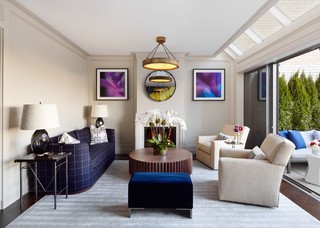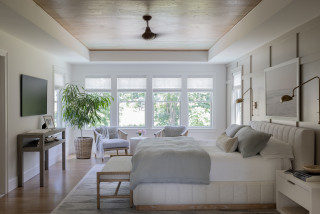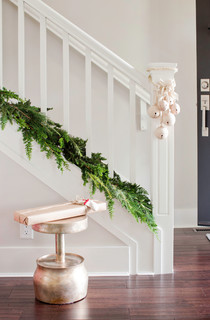
This article was originally published by a www.houzz.com . Read the Original article here. .

What it is: More than any other style, traditional decorating embraces a sense of history, with heirloom-quality antiques, rich woods, plush carpets and pretty patterns. Although traditional style does tend to be formal, with symmetrical arrangements and refined materials, the ultimate goal is comfort, warmth and a welcoming feel.
Where it comes from: Traditional style traces its roots to 18th- and 19th-century Europe, although a general sense of honoring the past is more central to the style than a focus on any particular region of the world.
Good to know: At first glance it may be hard to distinguish between a traditional and transitional space (and it doesn’t help that the words are so similar), but it’s easier when you know what to look for. Simply put, traditional style adheres firmly to classic designs rooted in history, while transitional style draws from both traditional and contemporary looks.
Hallmarks of traditional style:
Antiques and new pieces with a timeless feelRefined color paletteClassic comforts such as a crackling fire on the hearth and floor-to-ceiling bookshelvesLuxurious materials like marble and rich woodsIntricate architectural details
This style works well with: Rustic, coastal, Mediterranean
Get the guide to traditional style
This article was originally published by a www.houzz.com . Read the Original article here. .

Budget can also dictate whether you use the color on something that is costly to change, like a sofa, or on items that can be altered inexpensively, like wall paint and accessories. “I think a red sofa is fabulous,” says Caccoma. But you’re going to be locked into that color for a long time, she cautions, because sofas are expensive to buy or reupholster. Think long and hard about whether you can live with that color for an extended period of time.
Add a pop of color with new throw pillows
This article was originally published by a www.houzz.com . Read the Original article here. .

Display any leftover holiday decor or seasonal ingredients — pine cones, string lights or ornaments that didn’t make the tree — into clear class containers, apothecary jars, cloches or cut crystal bowls. Place the containers on a bar cart or anywhere else you could use a little holiday decoration.
Tip: To fill a cloche, place all of your baubles in the upside-down cloche, put a piece of cardboard over the opening, flip over the cloche, place it on the table and carefully slide out the cardboard. Use the same technique in reverse to empty it.
This article was originally published by a www.houzz.com . Read the Original article here. .
For many couples there’s often one person who’s more interested in decorating than the other. The other person might say, “Do whatever you want.”
Do not do whatever you want. Because as soon as you start buying things, Mr. or Ms. No Opinion will suddenly have an opinion. So make him or her spend some time with you at the very beginning just looking at pictures of interiors. “Spend an hour or two on the computer and look at some things together and talk about them,” says interior designer Alana Homesley of Woodland Hills, California. As you review each room, ask your partner, “What do you like about it? What don’t you like about it?”
Alternatively, you can each collect images independently, then sit down and compare what you’ve chosen. This way your initial selections won’t be swayed by the other person. As you review your selections together, your differences and similarities will immediately become apparent.